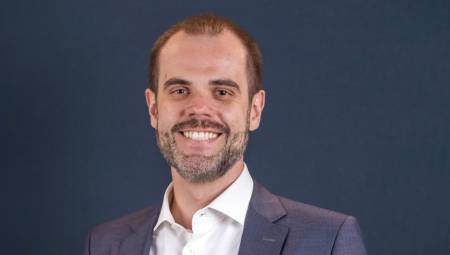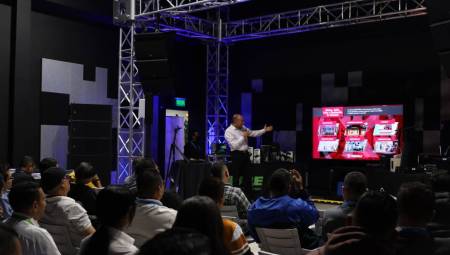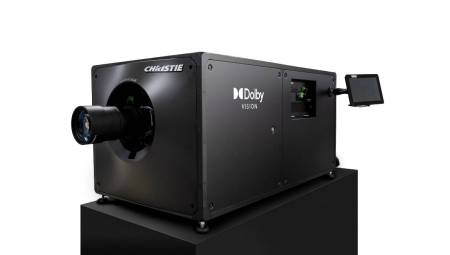 Digital sound for commercial and corporate applications has been used for some time, but for broadcast it is just beginning its implementation.
Digital sound for commercial and corporate applications has been used for some time, but for broadcast it is just beginning its implementation.
By Richard Santa
In recent years we have heard about the migration from analog to digital in broadcast, but this has been based on image and sound has been neglected. Now we begin to talk about the digitization of sound.
Using a digital audio system will avoid the problems of analog systems such as intermodulation, difficult handling of the spectrum of frequencies and distribution of wireless channels, just to name a few. In Latin America, the implementation of digital sound has been marked by the increase in the number of productions of international stature. In addition, it has generated a greater demand for professionals specialized in audio for broadcast by channels and producers.
To better understand this process of digitizing sound in Latin America and what its benefits will be, TVYVIDEO spoke with Camilo Correal, one of the managers of Sennheiser's broadcast area, who commented on the current state of sound in Latin American television channels and how the process of implementing digital audio will be.
What does a Latin channel prefer when looking for microphones? According to Camilo Correal, the channel seeks in the long run to have a way to handle information faster (audio and video), make it more efficient, more effective and with higher quality. The audio quality of the digital, as it does not accept interference and is compressed, tends to improve compared to analog. Therefore, the channels sooner or later will have to migrate there because a single network will handle everything, but being new technology is a little expensive.
And it is precisely the price of the systems that has historically influenced the final decision of the users. But this trend is changing: "Channels are not always based on price. Sometimes they are based on the advantages of having digital systems. But we are in the process of transition, not everything is digital yet. Even the servers if we put digital audio in them do not have the capacity to process it. It's something that has to do with the whole network process. In about two three years, everything is going to end up being digital."
First the video
In television, digitalization has been thought first from the image, sound has been in the background, but for some years users and channels have realized the importance of sound. Our guest mentions that in an interesting study, two groups of people were put on a video. Both had the image of excellent quality, but one was distorted by the sound. The group with good image and sound, had no criticism about the image. The second, despite having the same images, manifested defects in framing and lighting. With this kind of thing people began to realize that audio is the heart of the image.
Obviously, as with the image, there will be a transition period between analog and digital audio. Camilo Correal says that the move to digital technology everyone will have to do. Today it is being done in terms of video and networks, the last step is that of microphones. It is a very new technology, it came out this year, that is to say that before you did not have the possibility of handling digital microphones.
"That's already in people's heads. Before audio was very undervalued but today there is much more awareness that audio is the heart, which makes the viewer vibrate when he is seeing an image. There are more specialized people and they are putting much more seriousness into the audio. In addition, all the products that are being made in Latin America are going through international cable channels, they are competing with gringo products, and that is why they cannot show products that are not up to those channels. Although it is a little missing because we do not have the experience. But in terms of equipment and human capacity we are already close."
Another aspect that is marking the implementation of digital audio is that viewers perceive the defects of the audio. And the comparisons between an American production and a Latin one felt very different audio. And when companies began to realize the importance of audio, they began not only to invest, but also to hire people who were very specialized in audio.
How far is progress being made in digital audio in Latin America? For Camilo Correal, digital audio is already invented. "We already know how to handle and produce. What is being done is to launch systems that are more in terms of price to the industry. Large television channels in Latin America have them, every time it will become more popular, but every time a new technology comes out it always has a high cost. Sooner or later everyone is going to use digital audio technology."
To-dos
In order for Latin American channels to have good audio, some parameters still need to be met. Camilo Correal pointed out that, for example, in Latin America something happens, there are very few countries that can transmit in surround and we are not recording with this technology. But when we export the series, we begin to simulate the surround and you can see the difference. In things like this we are below, but because we are exporting a lot, people are adapting.
Another aspect is the belief that audio problems can be solved in post-production. But if the audio is not captured as it should be, then it cannot be processed in post-production. "The most critical thing is the moment in which the television is recorded and that is that the audio has to be recorded with very good standards, with a very clear cleaning because no matter the process that is done later, it will not look good.
It is very difficult to correct the audio in post-production, those corrections do not generate good quality audio. If the audio arrives bad, from then on everything comes out very regular. That is why you need very good quality microphones and sound engineers who know very well what they are doing and have in their head the subsequent process, who have the idea of how the audio is going to come out at the end since it is being recorded, "he said.
In addition, the to-do list also adds that there is a lack of audio specialists with an emphasis on broadcast in the region. Although there are a university with sound engineering and people who have in mind the audio in its theoretical part, in practice there is not a good offer of technical training especially for broadcast in Latin America. Each recording has very different spaces and conditions that require tailor-made solutions for each situation.
"The techniques and situations for broadcast always change a lot and that has to do with the creativity and technical knowledge of the sound engineers. But we have very good engineers in Latin America who, along with the increase in productions of international stature, have been creative and have sought training, even online."
Analog audio myths
Wireless analog audio has many myths about how it works. Some are unfounded and others are mismanagement. For Camilo Correal, wireless analog audio works very well as long as there is a previous study of the radio frequency landscape where it is going to be recorded. The problem with many sound engineers is that they believe that wireless microphones, whether digital or analog, are plug and play.
"When you arrive at a location, an analysis of the radio frequency landscape must be made and depending on the situation, the microphones must be squared so that there is no interference with the natural interference of the place and with the microphones themselves. Many times the problem is not of the technology but of its use. In general terms, wireless microphones work very well, as long as you know how to use it."
Sennheiser technology for broadcast
Camilo Correal commented that Sennheiser is currently promoting its 9000 series digital microphone system. It is a totally digital series that seeks to keep the entire audio chain digital from the microphone, through the console, processors, all digital until the final product is already made, either for transmission or recording. Its great feature is that it does not generate intermodulation, so it has a much easier frequency handling than analog series.
"The fact that you can handle the entire audio chain, especially right now that all the channels are networks and from the same network you can send the signal to any studio, so the fact that it is all digital is supremely useful and easy for the whole structure that is being mounted on the channels," he added.
But there are also two lines that are most used in the world for broadcast. For the studies they have the evolution 100, 300, and 500 series. And for the big studios there's the 2000 series.















